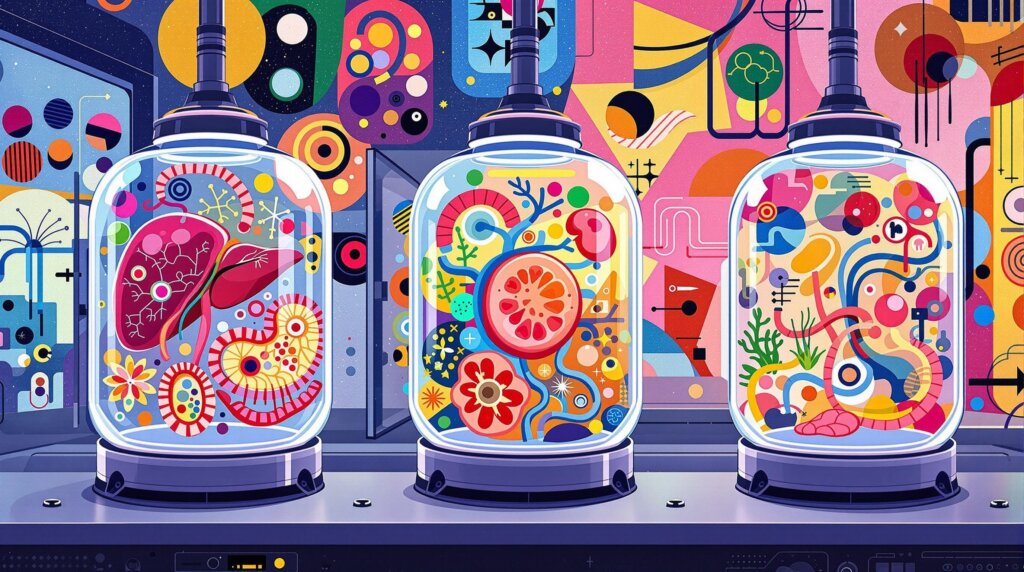Understanding Bioprinted Organs: A Revolution in Medicine
What are Bioprinted Organs?
Bioprinting has emerged as one of medicine’s most promising technologies. It uses specialized 3D printers to create living tissue layer by layer, using bio-inks made from human cells. This technology could potentially produce fully functional organs for transplantation, from hearts to kidneys to livers.
The Science Behind Organ Bioprinting
The process starts with harvesting cells from a patient. These cells are then multiplied in lab conditions and mixed with a supporting material to create bio-ink. The printer deposits this mixture precisely according to a computer-generated design. After printing, the tissue needs time to mature and develop proper cellular connections.
Current State of Bioprinting Technology
While we can’t yet print fully functional complex organs, scientists have achieved significant milestones. Simple tissues like skin, cartilage, and blood vessels have been successfully printed and even used in medical treatments. The Wake Forest Institute for Regenerative Medicine has printed ear, bone, and muscle structures that functioned when implanted in animals.
Challenges and Limitations
Creating complex organs remains technically challenging. The main hurdles include developing proper vascularization (blood vessel networks), ensuring cellular survival during printing, and maintaining organ function. Additionally, regulatory approval for human use requires extensive testing and validation.
Statistics and Market Potential
The global bioprinting market is expected to reach $4.2 billion by 2027. According to WHO data, nearly 150,000 organ transplants are performed annually worldwide, while millions remain on waiting lists. In the US alone, 17 people die each day waiting for organ transplants.

Impact on Longevity and Healthcare
Extending Life Through Organ Replacement
Bioprinted organs could revolutionize life expectancy. Instead of waiting for donor organs, patients could receive custom-made replacements using their own cells, eliminating rejection risks. This technology could add decades to lives previously cut short by organ failure.
Preventive Medicine and Organ Testing
Bioprinted tissue models already help test new drugs and treatments. Scientists can study disease progression and treatment effects on printed human tissue, making drug development safer and more efficient. This could lead to better treatments for age-related diseases.
Technical Aspects of Organ Bioprinting
Types of Bioprinting Technologies
Three main approaches dominate the field: inkjet-based bioprinting, which deposits droplets of bio-ink; extrusion bioprinting, which uses continuous streams of material; and laser-assisted bioprinting, offering precise placement of individual cells. Each method has specific advantages for different tissue types.
Materials and Bio-inks
Bio-inks combine living cells with supporting materials called hydrogels. These must be biocompatible, printable, and able to maintain cell viability. Recent advances include smart materials that respond to environmental changes, improving tissue development.
Tissue Maturation and Integration
After printing, tissues need time in bioreactors to develop proper structure and function. Scientists use various techniques to encourage proper cell organization, including mechanical stimulation and growth factors. The goal is creating tissue that mimics natural organ function.
Current Applications and Success Stories
- Printed skin grafts for burn victims
- Bioprinted cartilage for joint repair
- Miniature organ models for drug testing
- Printed blood vessels for cardiovascular research
- Bone tissue for reconstructive surgery
- Dental tissue for oral surgery
- Printed corneas for eye transplants
- Tissue models for cancer research
Future Developments and Predictions
Next-Generation Technologies
Advanced bioprinting systems are incorporating artificial intelligence to optimize printing parameters. New techniques like 4D printing, where materials change shape over time, could create more dynamic tissue structures. Researchers are also developing methods to print multiple cell types simultaneously.
Timeline to Viable Organs
Most experts estimate 10-15 years before fully functional complex organs become available for human transplantation. Simple organs like bladders might be available sooner. The first likely candidates for complete organ printing are those with simpler structures, such as pancreas or thyroid glands.
Integration with Other Technologies
Bioprinting is combining with other advances like gene editing and stem cell research. CRISPR technology could create enhanced cells for printing, while stem cell advances improve cell source options. Machine learning algorithms are optimizing tissue design and printing parameters.
Impact on Healthcare Systems
Economic Implications
Bioprinted organs could reduce healthcare costs long-term. While initial organ costs might be high, eliminated anti-rejection medications and reduced complications could save millions per patient. The global economic impact could reach hundreds of billions annually.
Healthcare Delivery Changes
Hospitals might need dedicated bioprinting facilities. Healthcare workers will require new training in bioprinting technology and post-print care. The entire organ transplant system could shift from donor-based to on-demand production.
Practical Considerations for the Future
- Regular organ function monitoring and maintenance
- Specialized care protocols for bioprinted organs
- Regular tissue sampling and testing
- Preventive replacement of aging organs
- Integration with personal health monitoring systems
- Regular updates to organ firmware (for smart organs)
- Dietary and lifestyle modifications
- Regular medical check-ups
Ethical and Social Implications
Access and Availability
Questions arise about who gets access to this technology. Cost and healthcare system integration will determine availability. Ethical frameworks must ensure fair distribution while considering economic realities.
Safety and Regulation
Regulatory bodies are developing new frameworks for bioprinted organs. Long-term safety studies will be crucial. Quality control standards must be established for consistent organ production.
Social Impact
The possibility of extended lifespans through organ replacement raises social questions. How will society adapt to longer lifespans? What are the implications for retirement, healthcare systems, and social structures?
Conclusion: The Path to Extended Lifespans
Bioprinted organs represent a significant step toward extending human lifespan beyond 100 years. While technical challenges remain, rapid progress suggests we’re on the cusp of a medical revolution. The ability to replace aging or damaged organs with custom-printed alternatives could fundamentally change how we age and how long we live.
Success in this field requires continued research investment, regulatory adaptation, and ethical framework development. As the technology matures, it’s likely to become a standard part of healthcare, offering hope to millions waiting for organ transplants and potentially extending human lifespan significantly.



